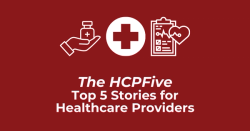
OR WAIT null SECS
Natalizumab-sztn Receives FDA Approval as First Biosimilar for Multiple Sclerosis
The approval was based on evidence showing no clinically meaningful differences between natalizumab-sztn and the reference drug in terms of safety, purity, and potency.
This article was originally published on NeurologyLive.com.
The FDA has approved Sandoz’s injection treatment natalizumab-sztn (Tyruko; formerly known as PB006), the first biosimilar to the approved formulation of natalizumab (Tysabri; Biogen) for the treatment of adults with relapsing forms of multiple sclerosis (MS).1 With this indication, the therapy can be utilized for patients with clinically isolated syndrome, relapsing-remitting disease, and active secondary progressive disease.
Additionally, the biosimilar is indicated for inducing and maintaining clinical response and remission in adults with moderately to severely active Crohn disease (CD) who also have evidence of inflammation and have had an inadequate response or inability to tolerate conventional therapies and inhibitors of tumor necrosis factor.
“Biosimilar medications offer additional effective treatment options that have the potential to increase access for people living with relapsing forms of multiple sclerosis,” Paul R. Lee, MD, PhD, director of the Division of Neurology II in the FDA Center for Drug Evaluation and Research, said in a statement.1 “Today’s approval could have a meaningful impact for patients managing their disease.”
According to the agency, the decision to approve was based on evidence showing no clinically meaningful differences between the Sandoz product and the already approved Biogen agent in terms of safety, purity, and potency. The treatment was assessed in the phase 3 Antelope study (NCT04115488), which included 264 participants, of which 131 received the biosimilar and 133 received the reference agent natatlizumab.2 At week 24, the model-based, least squares mean difference in cumulative number of new active lesions between biosimilar and reference treatment groups was 0.17 (biosimilar, 0.34 [SE, 0.34]; reference, 0.45 [SE, 0.28]; 95% CI, –0.61 to 0.94). There were no significant differences between treatment groups observed across secondary efficacy end points, safety, tolerability, or immunogenicity assessments, according to the authors.
Sarah Yim, MD, director of the Office of Therapeutic Biologics and Biosimilars in the FDA’s Center for Drug Evaluation and Research, said in a statement1 that the approval “furthers the FDA’s longstanding commitment to support a competitive marketplace for biological products and ultimately empowers patients by helping to increase access to safe, effective and high-quality medications at potentially lower cost.”
The most common adverse events associated with natalizumab products are headache and fatigue, with other common AEs including arthralgia, urinary tract infection, lower respiratory tract infection, gastroenteritis, vaginitis, depression, pain in extremity, abdominal discomfort, diarrhea, and rash.
Notably, the prescribing information for natalizumab products—which now includes both Tyruko and Tysabri formulations—contains a boxed warning for health care professionals and patients about the increased risk of progressive multifocal leukoencephalopathy (PML). The risk factors for PML include the presence of anti-JCV antibodies, longer duration of therapy, and immunosuppressant use, and the FDA noted that these factors “should be considered in the context of expected benefit” when beginning or choosing to continue treatment with natalizumab products. Because of these PML risks, however, natalizumab products are available only through a restricted drug distribution program, under a risk evaluation and mitigation strategy (REMS). Part of these requirements include 3- and 6-month post first infusion evaluations, continuing every 6 months thereafter, as well as immediately and 6 months after treatment discontinuation.
The therapy’s label also includes information on the risks of herpes infections, thrombocytopenia, immunosuppression, and serious hypersensitivity reactions. The FDA granted approval of Tyruko, the first biosimilar to Tysabri (natalizumab), to Sandoz Inc.
Recently, NeurologyLive® gathered a number of advanced practice providers together to discuss the who, what, and where of biosimilars, the role of these therapies in MS care, and clinical data on biosimilars currently in development for MS. To get all of their insights into how to incorporate biosimilars into MS clinical practice, check out the full series here:
How Similar are Biosimilars? A look into the Future with Biosimilars in Multiple Sclerosis
In this clip below, Amy Perrin Ross, APN; Patricia Melville, NP-C; Aliza Ben-Zacharia, PhD, DNP, ANP-BC; and John Kramer, PA-C, discuss Sandoz’s natalizumab biosimilar and the phase 3 Antelope study.
References
1. FDA Approves First Biosimilar to Treat Multiple Sclerosis. News release. FDA. August 24, 2023. Accessed August 24, 2023. https://www.fda.gov/news-events/press-announcements/fda-approves-first-biosimilar-treat-multiple-sclerosis
2. Hemmer B, Wiendl H, Roth K, et al. Efficacy and Safety of Proposed Biosimilar Natalizumab (PB006) in Patients With Relapsing-Remitting Multiple Sclerosis: The Antelope Phase 3 Randomized Clinical Trial. JAMA Neurol. 2023;80(3):298–307. doi:10.1001/jamaneurol.2022.5007


